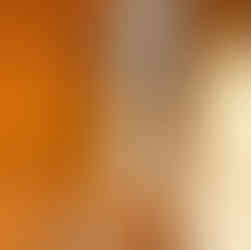Violation of electrical safety regulations in India: An example from Modern and Global Hotels.
Hospitality Industry during the last years grown exponentially across India. High class hotels by Indian / International brands are common across the country now a days. This article is to help users of these hotels to analyse the safety culture built in these hotels, through some simple techniques so that staying in dangerous hotels can be avoided due to safety reasons.
Iron box and water heaters (kettle) are the common electrical appliances used in a hotel room by an occupier. Both these devices are class 1 (means an insulation failure inside these devices can be fatal). To avoid electric shock to users and to ensure safety, every class 1 apparatus shall use a 3-pin plug, the third one is the protective earth conductor. The following picture shows both an Indian socket, and a SCHUKO plug.
Fig 1: SCHUKO plug (generally used in some European nations) suitable up to 16 amps.
Fig 2: Indian socket with the third pit at the top suitable for 6 amps.
Connection of the third pin is for safety. The third pin also shall make contact before the other pins while inserting into a socket and disconnect as the last while unplugging.
Invariably in almost all these high end hotels, both iron box and water heaters use SCHUKO plugs. Both these devices are high power and need connection to a socket of up to 16 Amps. Indian socket used in these hotels are invariably 6 Amps.
Three safety violations happen in these hotels,
No proper connection of earth wire to the apparatus.
The high-power appliances used, (which need 16 amps socket), are generally plugged into the 6 amps. Remember the 6 amps socket is designed for generally a load up to 1000 watts. (This limit is an example and is very much on a higher side if multiple sockets are connected in a circuit).
Some hotels provide an Indian Socket 16 amps, however the SCHUKO plug cannot be inserted inside 16 amps Indian Socket, as a result the users damage both the socket and the plug.
Name plate of an iron box used in a hotel is in figure 3
Another important subject is the connecting wire of the iron box which is twisted and made beautiful to have a beautiful view (applicable to almost all hotels), which damages the wire as shown fig. 4 & 5. Some More examples are in fig 6 & 7.
These hotels always claim they are the top class in several subjects including safety and claim that they conduct regular electrical safety audits. However, the violations are clearly visible. As most of the electrical wirings and protective devices are hidden, probably the actual safety situation is a replica of what is seen externally.
Now who is the culprit? The management or the electrical engineer who design and maintain these facilities or the safety auditor??. Will these foreign hotel chains use Indian socket, a plug or an Indian product in their home country??, Why not the Indian safety auditors advise them to rectify these safety violations?? Or does the Indian life is not valuable??
Recommendation
Use sockets and plugs approved in the Indian standards,
Ensure that the maximum load connected to a 6 amps socket is 1000 watts, (This limit is an example and is very much on a higher side if multiple sockets are connected in a circuit).
Use 16 amps sockets for high-capacity appliance such as iron box and kettles.
Note: as per The Electricity Act 2003, these violations are punishable (not only the electrical engineer, but the owner or management of the facility as well), in case of an accident.

Fig 3: Name plate of a typical iron box used in hotel (NOVOTEL PUNE)

Fig 4: Twisted and damaged cable at “COURTYARD MARRIOT” near International Airport Cochin.

Fig 5: Damaged cable of the iron box.

Fig 6: A SCHUKO 6 amps plug used and an “INDIAN SOCKET” in GRAND HYATT, Kochi Bolgatty

Fig 7: A 2000 watts Iron box with 6 amps plug used in GRAND HYATT, Kochi Bolgatty
2000 W electric iron with twisted and damaged cables ITC Ahmedabad

Kettle with Schuko plug in Indian socket. SHANGRI-LA hotel New delhi









Comments